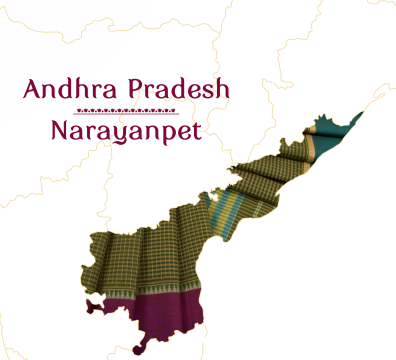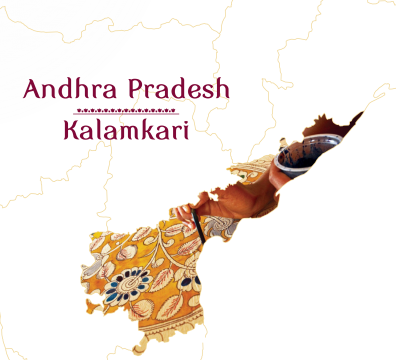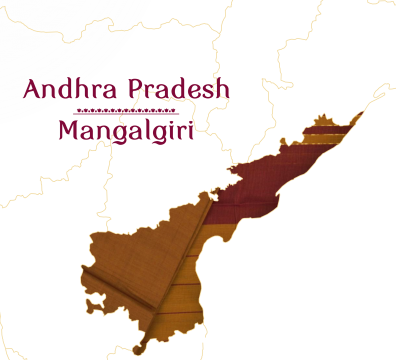
Narayanpet
Narayanpet is a famous handloom cluster in Telangana and has an important place in weaving in the Deccan plateau. The weaving in Narayanpet is closely related to weaving in Karnataka and Maharashtra and it is known for its very exquisite and interesting silk sarees. Their borders and pallus are very traditional. They are characterized by a rich pallu with a unique pattern of alternating red and white bands. The border is usually a flat expanse of deep maroon red or chocolate red thinly separated by white or colored lines. They come in contrasting colors with special pallus and simple borders.


Kalamkari
Kalamkari is a type of hand-painted or block-printed cotton textile produced in Isfahan, Iran, and in the Indian states of Andhra Pradesh and Telangana. Only natural dyes are used in Kalamkari, which involves twenty-three steps.
There are two distinctive styles of Kalamkari art in India – the Srikalahasti style and the Machilipatnam style. The Srikalahasti style of Kalamkari, where the “Kalam” or pen is used for freehand drawing of the subject and filling in the colors, is entirely hand worked. This style flourished in temples centered around creating unique religious identities, appearing on scrolls, temple hangings, chariot banners as well as depictions of deities and scenes taken from the Hindu epics (e.g. Ramayana, Mahabharata, and Purana).
Mangalgiri
Mangalgiri is a perfect summer pick for it is the softest and light cotton variation ever. The pure cotton yarns are first dipped in boiling water to remove the impurities, then soaked and rinsed overnight. The yarns are then sent for dyeing and finally washed again. The pre-loom process of this heavenly handloom starts with the winding of the yarns into warp and wefts then spraying rice congee onto the yarn to make it suitable for weaving. What makes it beautifully identifiable is the dual-textured shine attained by weaving gold and silver zari yarns along with the cotton ones.





